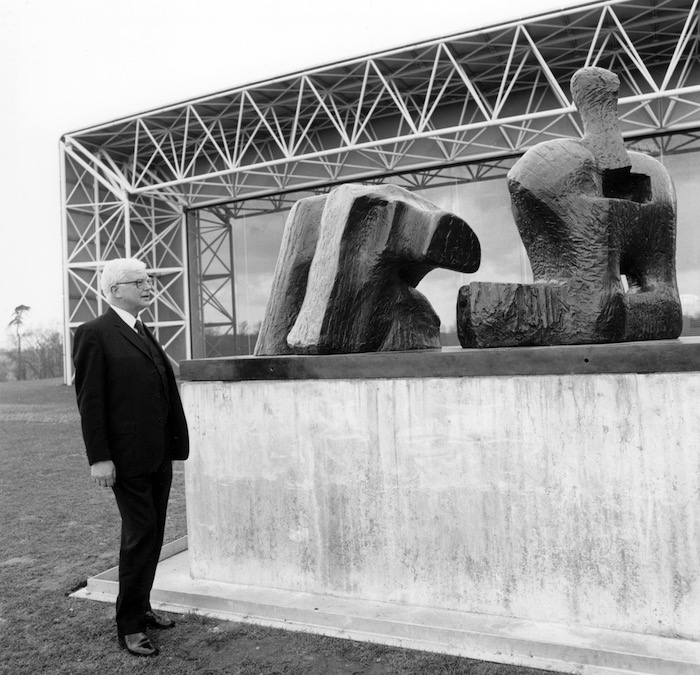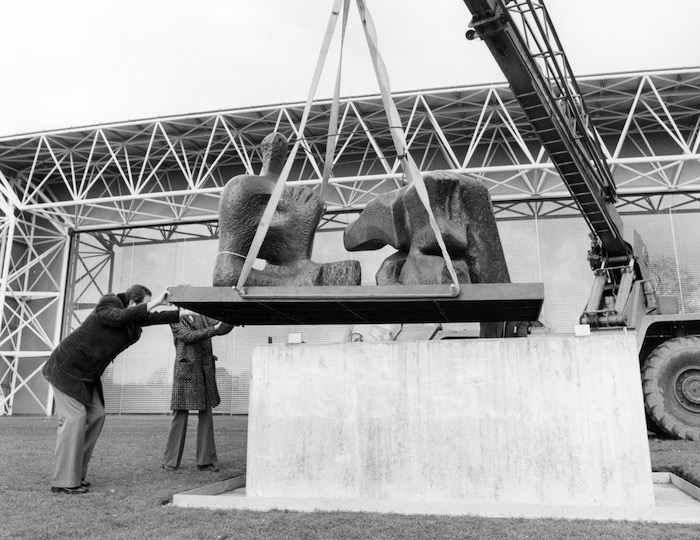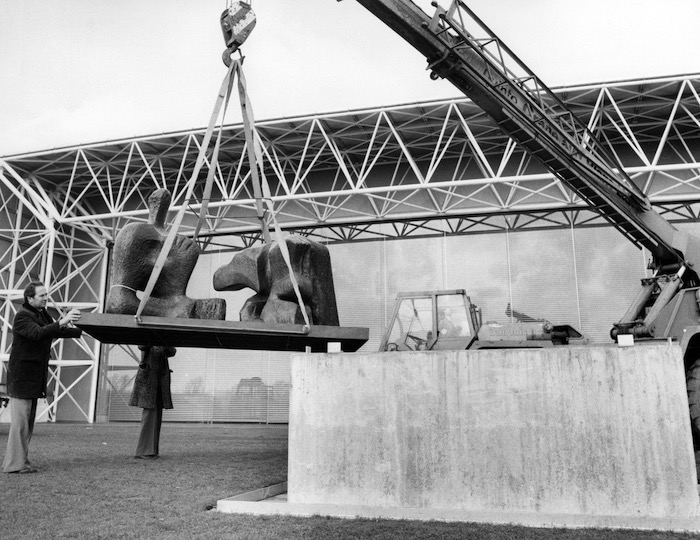Two piece reclining figure, No. 3
Henry Moore
Life Story
Moore consistently equated female anatomy to landscapes throughout his oeuvre, particularly in relation to his reclining figures. The earliest he specifically referenced this connection was in his 1930 Reclining Woman, which was once titled Mountains. [1] Moore explained the development of the visual symbolism into his Two Piece Reclining Figures. ‘I realised what an advantage a separated two-piece composition could have in relating figures to landscape. Knees and breasts are mountains. Once these two parts become separated you don’t expect it to be a naturalistic figure.’ [2]
Moore often recalled the landscapes of his childhood as the impetus for his mountainous works: Adel Crags in Yorkshire, and the coal-mining slag heaps in Castleford. However, David Sylvester writes that Moore’s more conscious sources were painting, citing Claude Monet’s paintings of the rocks at the coast of Étretat, Normandy, or Georges Seurat’s parallel subject of the Normandy coast at Le Bec du Hoc. [3]
Two Piece Reclining Figure No. 3 presents strikingly varying views from every angle, offering surprise as the viewer moves around it. One side reveals the face, where hollows marking the eyes stare out at the viewer. From here, the two forms appear clearly defined, with a lightning-bolt void separating them. As the viewer moves round to the legs, they seem to merge into a single block. From this angle, the sculpture is comparable to Moore’s Square Form, his abstract work from 1936, with a gauge cutting across one side like a mouth. From the head, what previously resembled two arms are merged together in an impossible anatomy. Here the form is bulky with a suggestion of the void, similar to Moore’s Atom Piece of 1964. As one moves around the sculpture these shapes shift, converge, blend and divide again.
Tania Moore, September 2020
[1] Sophie Bowness, ‘Modernist stone carving in England and “the big view of sculpture”’ in Michael Harrison (et al), Carving Mountains (Cambridge: Kettle’s Yard, 1998), p.30.
[2] Philip James (ed.), Henry Moore on Sculpture (London: Macdonald, 1966), p.266.
[3] David Sylvester, Henry Moore, (ex cat) (London: Tate, 1968), p.37
Further Reading
Henry Moore: Sculptural Processes and Public Identity, Tate Research Publications, https://www.tate.org.uk/art/research-publications/henry-moore/henry-moore-om-ch-two-piece-reclining-figure-no3-r1171997
Tania Moore, Henry Moore: Friendships and Legacies (Norwich: Sainsbury Centre, 2020)
Provenance
Given to Tate by Henry Moore in 1978 as part of a donation of 35 works.
On long loan to the Sainsbury Centre since 1979.
On display
Title/Description: Two piece reclining figure, No. 3
Artist/Maker: Henry Moore
Born: 1961
Object Type: Outdoor sculpture, Sculpture
Materials: Bronze
Accession Number: L.06
Historic Period: 20th century
Production Place: Britain, England, Europe
Copyright: © Reproduced by permission of the Henry Moore Foundation
Credit Line: On long loan from Tate












